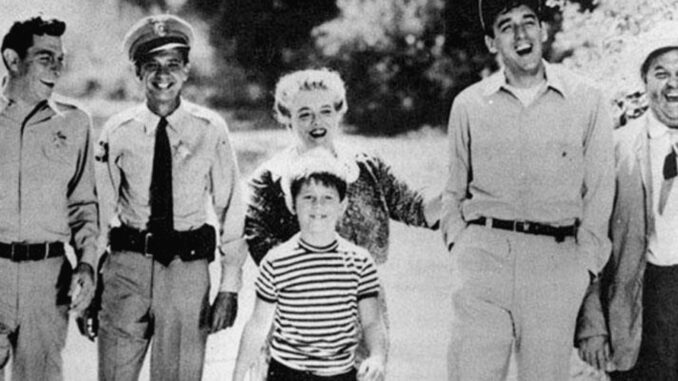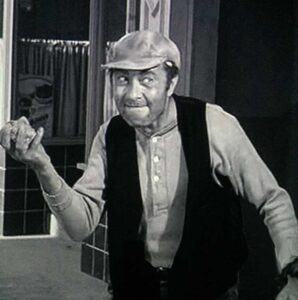
Introduction: When Mayberry Lost Its Magic
You’d be hard-pressed to find a TV show more beloved than “The Andy Griffith Show.” With its gentle humor, small-town charm, and characters that felt like family, it defined wholesome entertainment in the 1960s. But like many legendary series, the show’s golden age didn’t last forever.
So, what happened? Why did one of the most iconic sitcoms in television history begin to crumble before it finally went off the air?
Let’s step back into Mayberry and examine the slow unraveling of this American classic — a decline marked by cast exits, tonal shifts, and creative fatigue.
The Early Glory: Why America Fell in Love With Mayberry
The Simplicity That Spoke Volumes
Back when “The Andy Griffith Show” premiered in 1960, the country was yearning for simplicity. Mayberry provided just that. No crime sprees, no fast-paced drama — just small-town life, relatable issues, and characters with heart.
Andy and Barney: The Chemistry That Carried the Show
Let’s face it — the show’s heart and soul were Andy Taylor and Barney Fife. Andy was the calm, wise sheriff. Barney? The jittery, lovable sidekick. The contrast was gold. Their friendship was the real magic.
The Turning Point: Don Knotts’ Departure Shook the Foundation
Why Did Don Knotts Leave the Show?
Don Knotts, who played Barney Fife, left the show after Season 5. He thought Andy Griffith was ending the series and signed a movie deal with Universal. But when Griffith chose to continue, Knotts was already gone.
The Aftermath of Losing Barney Fife
Without Barney, the comedic tension vanished. The chemistry that once made the show sing now felt flat. Andy, previously the straight man, had to carry both the comedy and the moral compass — a tall order even for Griffith.
Andy Griffith’s Own Shift: A Lighter Andy, A Heavier Burden
From Father Figure to Frustrated Star
In early seasons, Andy was warm and humorous. But after Knotts’ exit, he became more serious, almost gloomy. Even Griffith admitted he wasn’t having fun anymore. That energy seeped into the episodes.
Audience Connection Started to Fade
When a lead loses interest, the audience can tell. The laughs were fewer. The spark was dimmer. Viewers still tuned in, but the magic of Mayberry had started to wear off.

Creative Burnout Behind the Scenes
Recycled Plotlines and Predictable Stories
By Season 6, the show started recycling old tropes. Lost dogs, miscommunication, mistaken identities — sound familiar? Writers were stretching the same formula until it wore thin.
Changing Times and Stale Humor
By the late ’60s, America was changing. Vietnam, civil rights, counterculture. But Mayberry stayed frozen in time. The show’s resistance to change began to feel tone-deaf rather than nostalgic.
The Switch to Color: A Visual Blow
Why the Color Transition Didn’t Work
The first five seasons were shot in black and white — and somehow, that worked perfectly with the show’s mood. But once it switched to color in Season 6, the charm seemed to drain. Critics and fans alike noticed it.
Color Highlighted the Flaws
Color made the set look faker. Characters aged. The idyllic illusion cracked. It was a classic case of “if it ain’t broke, don’t fix it.”
New Characters, New Problems
Trying to Replace Barney Was a Mistake
Producers tried filling the Barney-sized hole with new deputies like Warren Ferguson. No disrespect, but they just didn’t click. The audience didn’t laugh. They didn’t care. And ratings began to wobble.
The Howard and Emmett Era Fell Flat
As the show tried shifting focus to characters like Howard Sprague and Emmett Clark, viewers checked out. These characters lacked the emotional depth or comedic timing of the originals.
The Rise of ‘Mayberry R.F.D.’: A Hollow Spin-Off
Andy Leaves, and the Show Ends in Spirit
After Season 8, Andy Griffith officially stepped away. Though the show technically continued as “Mayberry R.F.D.,” it was Mayberry in name only. The heart of the series — Andy Taylor — was gone.
A New Cast That Couldn’t Fill Old Shoes
Ken Berry took over as the lead in R.F.D., but it didn’t have the same warmth or familiarity. It limped along for three seasons before being quietly canceled in 1971.
Cultural Irrelevance: The World Moved On
The Real World Was No Longer Interested in Make-Believe
In the era of Nixon, protests, and shifting social values, Mayberry felt out of touch. Viewers were no longer entertained by stories about Aunt Bee’s pickles or Opie’s frog collection.
Competing Shows Took Over the Spotlight
Shows like “All in the Family” and “MAS*H” brought a different kind of comedy — sharper, smarter, and more relevant. Mayberry, sweet as it was, had become a relic.
Why the Decline Was Inevitable
No Show Stays on Top Forever
Even the most beloved series can’t maintain their magic forever. Cast changes, creative burnout, and evolving culture created a perfect storm of decline for “The Andy Griffith Show.”
A Gentle Farewell, Not a Tragic Fall
To its credit, the show didn’t crash and burn. It faded gracefully. Fans still remember it fondly — but they also know the last few seasons just weren’t the same.
Lessons from Mayberry’s Fall
Character Chemistry Is Everything
The loss of Barney Fife proved how crucial character dynamics are. You can’t force chemistry — and you can’t fake what’s gone.
Know When to Say Goodbye
Maybe if the show had ended with Don Knotts’ departure, it would’ve gone out on top. But continuing past its prime left a slightly bittersweet legacy.
Legacy: Why We Still Love It Anyway
A Place in TV History
Despite its decline, “The Andy Griffith Show” remains a cultural icon. It shaped generations and gave us characters that still feel real.
The Rerun Effect
Syndication gave new life to old Mayberry. Many viewers only discovered the show decades later — and they mostly stuck to those black-and-white, early-season classics.
Conclusion: The Curtain Falls on Mayberry
The fall of “The Andy Griffith Show” wasn’t dramatic or scandalous. It was more like watching summer slowly turn into fall. Quiet. Gradual. Unavoidable.
The show gave us years of comfort, warmth, and laughter. But like all good things, it couldn’t last forever. And maybe that’s okay.
Because sometimes, the best memories are the ones frozen in time — before the magic faded.
FAQs
1. When did ‘The Andy Griffith Show’ start to decline?
The decline started after Season 5 when Don Knotts left the show. His departure created a noticeable drop in comedic quality and character chemistry.
2. Why didn’t Don Knotts return to the show?
He believed the show was ending after five seasons and signed a movie deal. When it continued, he was already contractually committed elsewhere.
3. Was Mayberry R.F.D. as good as The Andy Griffith Show?
Not quite. While it continued the Mayberry setting, it lacked the charm and characters that made the original series a hit.
4. Did Andy Griffith enjoy the later seasons?
Not particularly. He’s admitted in interviews that he wasn’t having as much fun once Don Knotts left and the show’s tone changed.
5. Why do fans still watch the show today?
The early seasons are timeless. Their gentle humor, moral stories, and rich characters continue to resonate with fans both old and new.
